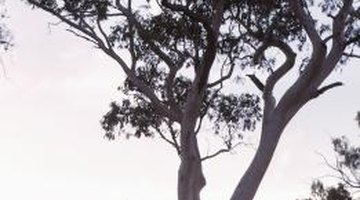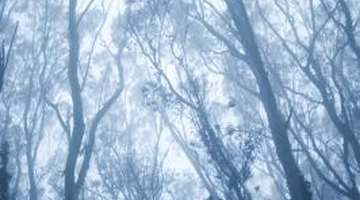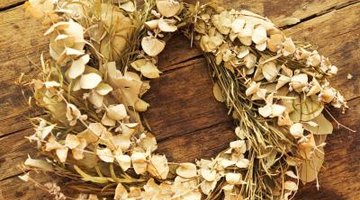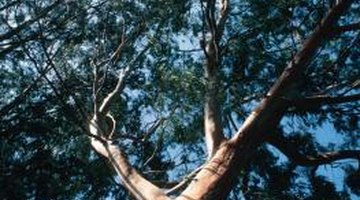Is Eucalyptus a Hard Wood or Soft?
The iconic Australian gum tree, or Eucalyptus, is largely endemic to that continent and Tasmania and comprises over 700 species. Eucalypts may be found in most environments on the continent, from snowy to semiarid regions, with the exclusion of tropical rain forests.

The Eucalyptus family has proven to be a valuable resource and has spread across the globe.
Characteristics

Eucalypts are evergreen hardwoods, shedding leaves continuously throughout the year, unlike North American hardwoods, which are generally deciduous. The largest group of Eucalypts are known as gums, but other Eucalypts include mallee, box, ironbark, stringy bark and bloodwood. Eucalypts are angiosperms, whose flowers are distinctive for their lack of petals and consist of clusters of brightly colored stamens that can vary from white to deep red. The leaves on most Eucalypts tend to be elongated and narrow, with the exception of the silver dollar gum, whose immature leaves are round and silvery blue.
Uses

The Eucalyptus family contains many fast-growing species that are popular plantation trees, now grown in 90 countries. Species of Eucalyptus are known for their hard timber and their high-grade pulp suitable for paper making. Their adaptability to a range of climates and soil types and rapid growth make them ideal for plantations. Eucalyptus oil is extracted from the leaves of several species. The lemon-scented gum, E. Citriodora, contains citronella; and the blue gum, or E. Globulus, contains cineole, which is the Eucalyptus oil sold for medicinal purposes.
Habitat
Eucalypts are hardy and cover most of the Australian continent, excluding the deserts and tropical rain forests. With so many species of Eucalypts, there is generally one suited to every climate and site. Flooded gums and river red gums can withstand regular flooding, while mallee can do well in semiarid conditions.
The Future of Eucalypts

Although soft woods such as radiata pine are still the dominant tree for plantations, Eucalypts such as shining gum, Tasmanian blue gum, black butt, flooded gum, mountain ash and white gum are being grown in increasing volume for hardwood timber and high-grade paper pulp.
The Drip Cap
- The iconic Australian gum tree, or Eucalyptus, is largely endemic to that continent and Tasmania and comprises over 700 species.
- Eucalypts may be found in most environments on the continent, from snowy to semiarid regions, with the exclusion of tropical rain forests.
- The largest group of Eucalypts are known as gums, but other Eucalypts include mallee, box, ironbark, stringy bark and bloodwood.
- Species of Eucalyptus are known for their hard timber and their high-grade pulp suitable for paper making.
References
Writer Bio
Sally Raspin has been writing since 2005. Her work has appeared in the "Healthy Soils Handbook," in several volumes of the "Backyard Farmer" and "Outdoor Ovens II," all published by Earth Garden Publications. She has written for "Rural Voice" in Ontario, Canada and has also published a children's book, "Grandma's Turkeys." She studied psychology and sociology at Charles Sturt University.
Photo Credits
- Hemera Technologies/Photos.com/Getty Images
- Hemera Technologies/Photos.com/Getty Images
- Siri Stafford/Lifesize/Getty Images
- Jupiterimages/Photos.com/Getty Images
- Hemera Technologies/Photos.com/Getty Images
More Articles



